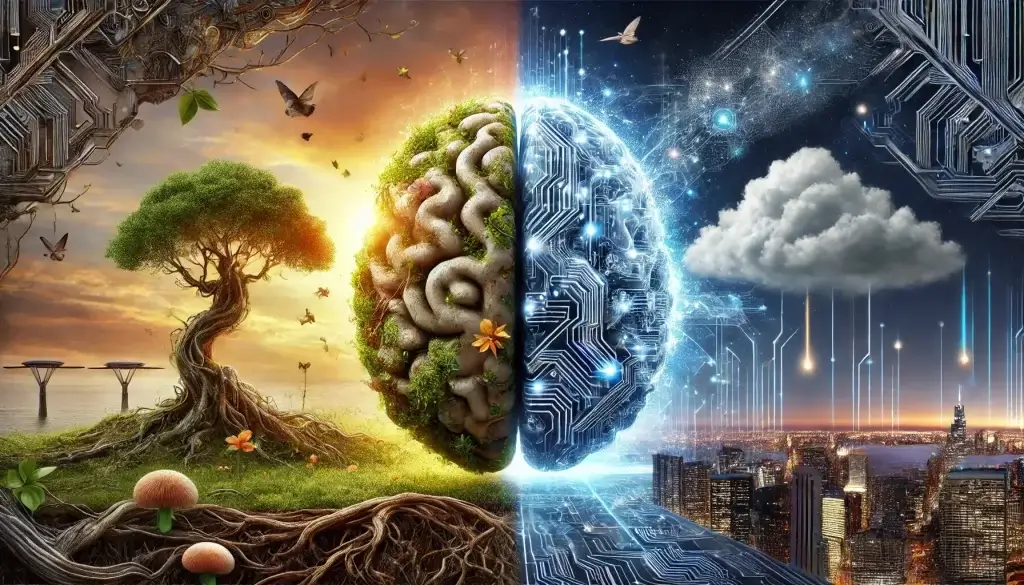Artificial Intelligence is no longer just science fiction or something whispered about in research labs. It’s here. It’s everywhere. It’s writing, driving, diagnosing — and still learning more, every minute. In some ways, it works like a really clever casino game: unpredictable, oddly strategic, sometimes thrilling, and never quite what people expect. Except this one plays with data instead of cards — and it never sleeps.

What AI Is (and Isn’t)
There’s still confusion. AI isn’t a robot in a suit saying hello. It’s not a machine plotting world domination — yet. It’s code. Algorithms. Systems that look at patterns and make decisions, often faster than any human could.
But it’s not magic. It needs fuel: data. It needs structure: models. And it needs humans — to build, train, monitor, and (hopefully) correct it.
Where AI Shows Up
AI’s fingerprints are on almost everything now. It’s not visible most of the time, but it’s quietly running things in the background — sometimes too quietly.
Some everyday areas where AI is already working:
- Phones: Voice assistants, face unlock, autocorrect — all AI-powered.
- Healthcare: Diagnostic tools spotting what eyes miss.
- Streaming platforms: Recommending what to watch next, based on habits.
- Maps & traffic: Predicting routes better than your instincts ever could.
- Finance: Fraud detection and algorithmic trading, done in milliseconds.
Five Types of AI That Are Changing the Game
AI isn’t one single thing. It comes in forms, levels, and ambitions.
- Narrow AI: Focused tools — like spam filters or chess engines.
- Generative AI: The ones that write, draw, compose — from thin air, seemingly.
- Machine Learning (ML): Algorithms that improve as they process more data.
- Natural Language Processing (NLP): Makes machines understand human language.
- Computer Vision: Helps machines “see” — used in cars, factories, even farming.
The Good News First
People like to talk about the dangers (we’ll get there), but AI is solving real problems too. It finds diseases early. It catches cheating. It helps kids learn. It fills labor gaps in places that are understaffed.
What AI is currently doing right:
- Speeding up processes: From medical results to customer support replies.
- Handling the boring stuff: Automating repetitive, manual tasks.
- Unlocking creativity: Assisting in art, music, writing — even if the results are strange.
- Accessibility tools: Helping people with disabilities interact with tech in new ways.
Now, the Other Side
For all the good, there’s always a shadow. Bias in data leads to biased decisions. Automation threatens jobs. Facial recognition brings surveillance questions. And deepfakes? They make reality harder to trust.
Challenges AI faces (and sometimes creates):
- Data bias: Garbage in, garbage out — biased input = biased result.
- Job displacement: Machines replacing humans in entire industries.
- Privacy risks: Systems tracking people more than they realize.
- Ethical grey zones: Who’s responsible when AI gets it wrong?
Not Just in Silicon Valley Anymore
AI isn’t staying in tech hubs. It’s in schools, farms, small businesses, police departments, and dating apps. It’s writing emails, grading papers, setting ad prices. The idea that AI belongs to “experts” is fading — fast.
At the same time, most people using AI daily… don’t even know it. That’s part of the issue. Invisible systems tend to escape accountability.
The Question of Control
Who builds AI? Who controls it? Who makes the rules? These questions are getting louder. Tech companies move fast. Governments move slow. And users — most of them — just try to keep up.
There’s talk of regulation. Of AI ethics boards. Of international cooperation. But enforcement? Still blurry.
The Road Ahead
AI won’t pause. It’s evolving in real time. What today feels like a helpful chatbot could soon be a gatekeeper to healthcare, jobs, justice. Whether that’s terrifying or exciting depends on who’s asked — and who’s ignored.
More transparency, better oversight, and public awareness aren’t optional anymore. They’re necessary.
Final Thought
AI is not a villain. It’s not a savior. It’s a mirror — reflecting the systems and biases it’s built upon. Sometimes it impresses. Sometimes it misfires. But it never stops learning.
Like a complex casino game, it’s partly skill, partly chance — and always full of risk.
